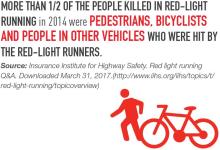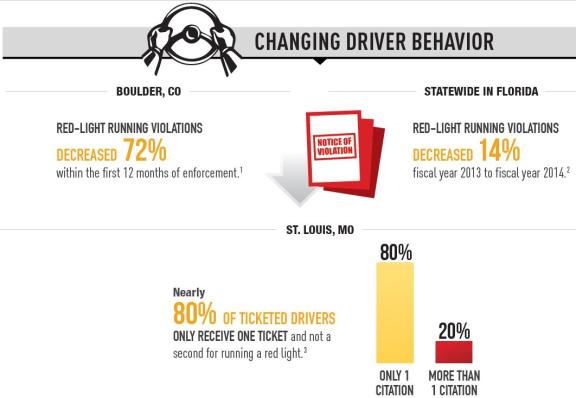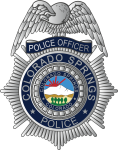Sixth Deadliest State for Red-light Running Crashes
More than two people are killed every day on U.S. roads by impatient and reckless drivers blowing through red lights, according to a new data analysis performed by the AAA Foundation for Traffic Safety. The most recent crash data available show that 939 people were killed in red-light running crashes in 2017 – a 10-year high and a 28 percent increase since 2012. In Colorado, 20 people were killed by red-light runners in 2017 – the sixth-highest rate, per capita, in the country.
Red-light running is a deadly epidemic. Red-light safety camera programs have proven to reduce the number of red-light running collisions and their associated injuries and fatalities.
Red Light Safety Cameras Reduce the Number of Deadly Crashes

Nearly half (46 percent) of those killed in red-light running crashes were passengers or people in other vehicles, and more than five percent were pedestrians or cyclists. Just over 35 percent of those killed were the drivers who ran the red light.
While enforcement is the single most effective way to get drivers to comply with red light laws, it is impossible for police to be at every intersection. The Insurance Institute for Highway Safety (IIHS) found that, when properly implemented, red-light cameras reduced the fatal red-light running crash rate of large cities by 21 percent and the rate of all types of fatal crashes at signalized intersections by 14 percent.
Source: AAA Foundation
Changing Driver Behavior

Tips for Motorists
Changes in driver behavior are critical to reducing red-light running crashes on U.S. roads. To prevent red light crashes, AAA recommends that drivers:
- Prepare to Stop: Lift your foot off the accelerator and "cover the brake" when preparing to enter any intersection by positioning your right foot just above the brake pedal, without touching it.
- Use Good Judgment: Monitor "stale" green lights – those that have been green a long time as you've approached the intersection.
- Tap the Brake: Tap your brakes a couple of times before fully applying them to slow down. This will catch the attention of drivers who may be inattentive or distracted behind you.
- Drive Defensively: Before you enter an intersection after the light has turned green for you, take a second after the light changes and look both ways before proceeding.
Tips for Vulnerable Road Users
Pedestrians and cyclists should also stay safe when traveling near intersections. AAA recommends:
- Wait: Give yourself a few seconds to make sure all cars have come to a complete stop before moving through the intersection.
- Stay Alert and Listen: Don't take chances and don't wear headphones. Watch what is going on and give your full attention to the environment around you.
- Be Visible: Stay in well-lit areas, especially when crossing the street
- Make Eye Contact: Look at drivers in stopped vehicles to ensure they see you before crossing the road in front of them.
There are several additional studies and research from other cities across the country showing the change in driver behavior and reduction of collisions from their road safety camera program. You can view them here verramobility.com/, or here, iihs.org/

